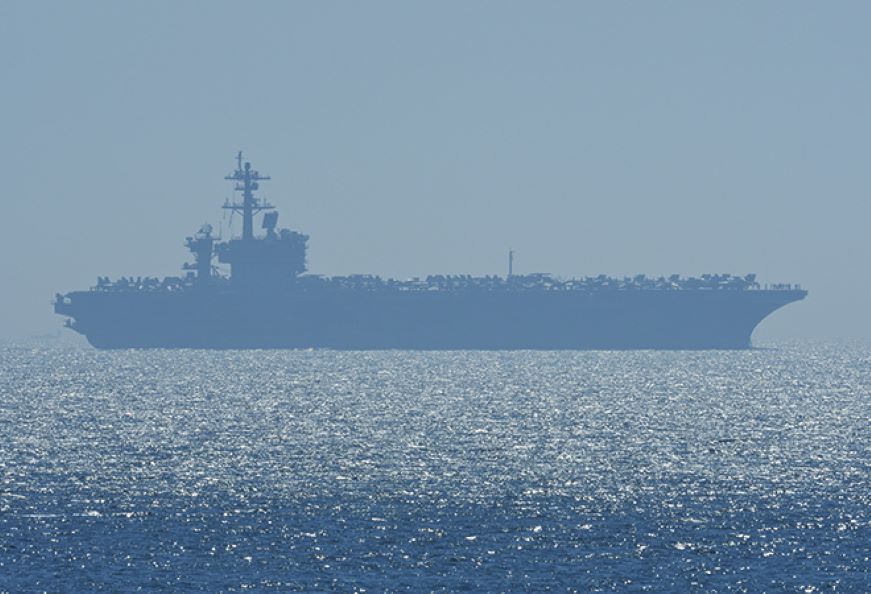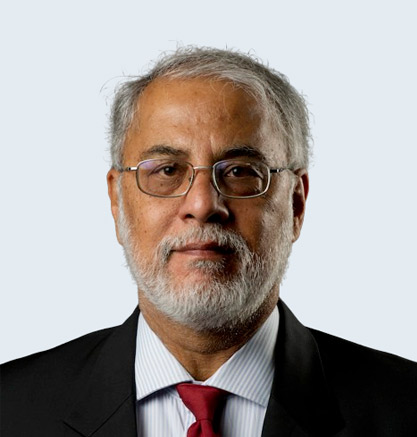-
CENTRES
Progammes & Centres
Location
By integrating its formal allies to enhance cooperation in the Indo-Pacific, the US is setting a new networked security architecture.

The recent United States (US)-Australia “2+2” meeting, also known as the AUSMIN, has taken the decision to invite Japan “to integrate into our force posture initiatives”. It is layered on the hub-and-spoke architecture of the US alliance system in the Asia-Pacific (aka Indo-Pacific) and the manner in which this system is giving way to a new networked security architecture in the Indo-Pacific, helmed largely by the US. This also caps a development initiated by the Australia-Japan Security Declaration of 2007 and the 2021 creation of AUKUS, the Australia-UK-US military alliance.
Over the years, Australia-Japan cooperation had involved the sharing of classified intelligence. In January this year, Japan and Australia signed an agreement that allows military forces from each country to train at each other’s bases and to collaborate on humanitarian missions. In October, visiting Prime Minister Kishida Fumio and his Australian counterpart Anthony Albanese issued a joint declaration which said that their bilateral partnership “reinforces our respective alliances with the United States”. Adding that this trilateral cooperation was “critical to enhancing our strategic alignment, policy coordination, interoperability and joint capability.”
Australia-Japan cooperation had involved the sharing of classified intelligence. In January this year, Japan and Australia signed an agreement that allows military forces from each country to train at each other’s bases and to collaborate on humanitarian missions.
In the Indo-Pacific, the US is the hub, with spokes linking it to its formal allies Japan, South Korea, Philippines, Australia, and Thailand. And there is a somewhat nebulous relationship with Taiwan and a “strategic partnership” with Singapore and India.
The “2+2” format involving joint meetings of foreign and defence ministers is an important instrument for shaping these relationships. The first US-Australia AUSMIN dates to 1985 and the first Japan “2+2”, also known as the Japan-US Security Consultative Committee took place in September 2000. India had its first “2+2” with the US in December 2018.
Since the 2000s, a Trilateral Security Dialogue began to link the US, Japan, and Australia. The spokes, too, began to connect with each other as evidenced by the Australia-Japan Security Declaration of 2007 and the 2009 Australia-South Korea Security Declaration and the continuing effort to link South Korea and Japan in security ties to create a new kind of security architecture that linked Australasia to North-east Asia. These security declarations were a cautious response to the rise of China and they have so far remained non-binding and provided for cooperation in a host of areas such as transnational crime, terrorism, counter-proliferation maritime and aviation security, and HADR.
In 2016, the Obama Administration conducted a twin-track initiative to revitalise US ties to the region. On one track, the US, through the Trans Pacific Partnership (TPP) sought to rewrite the economic rules of the region. On the other, the US wanted to transform its hub and spoke approach by creating what former U.S. Secretary of Defense Ashton Carter called a “principled security network”.
The US walked out of the TPP and the President began a trade war with China that mutated into a strategic competition between the two countries.
The key tier of this network was the trilateral mechanisms which brought together countries that had earlier cooperated only bilaterally. This involved the continuing emphasis on the US-Japan-Australia ties and those between the US-Japan-South Korea partnership focused on the missile and WMD threat from North Korea. India was a new element in the US equation but it followed the trilateral logic when Japan re-joined the India-US bilateral Malabar exercise in 2015.
Speaking at the 15th Shangri La Dialogue in Singapore, Carter said that security cooperation could possibly even result one day in a US-China-India maritime exercise. This was the era of US-China engagement and Beijing’s participation in the RIMPAC exercises.
A year later, Donald Trump came to office as the US President and shook things up in his characteristic style. The US walked out of the TPP and the President began a trade war with China that mutated into a strategic competition between the two countries. Trump also demanded that allies like Japan and South Korea pay more for the US participation in their security and reached out to try and make peace with North Korea. But his efforts eventually served to firmly cement the US role in the region.
The US also now clearly defined its attitude to the Indo-Pacific region. in a policy document declassified in January 2021, the administration said that the goal of US policy was “to maintain U.S. strategic primacy in the Indo-Pacific region.” It would do this by promoting a “liberal economic order” while preventing China from establishing “illiberal spheres of interest.”
An important goal for the US was to “enhance the credibility and effectiveness” of its alliances. From a loose trilateral framework, efforts were made to create a quadrilateral one with the revival in 2017 of the Quadrilateral Grouping or the Quad—US, Japan, Australia and India—now viewed as the “principal hubs” of the new security architecture for the region.
The Biden administration’s Indo-Pacific strategy revealed in February 2022 has emphasised the importance of promoting regional prosperity along with security and the importance of “democratic resilience.”
The Biden administration largely doubled down on the Trump initiatives. A new trilateral military alliance called the AUKUS, again helmed by the US, emerged in September 2021 to bind Australia, the US, and the UK together. The Biden administration’s Indo-Pacific strategy revealed in February 2022 has emphasised the importance of promoting regional prosperity along with security and the importance of “democratic resilience.”
It said that for a “free and open Indo-Pacific”, there is a need for a network of alliances, organisations and rules. The efforts would involve the treaty allies of the US as well as countries such as India, Indonesia, Vietnam, and others. Importantly, it notes that the US would “encourage our allies and partners to strengthen their ties with each other”.
In fact, the document notes that a particular target of this was to promote trilateral cooperation with Japan and South Korea and added that “Increasingly, we will seek to coordinate our regional strategies in a trilateral context.” The economic leg of the new American approach also led to the enunciation of an Indo-Pacific Economic Framework (IPEF), a somewhat poor substitute for the TPP.
Just how things are working is evident from the fact that the US-Australia AUSMIN was followed up by the first in-person Japan-Australia 2+2 meeting that began on Friday. The two had had a virtual meeting in June 2021 as well. The aim of last week’s meeting is to build upon the joint declaration on security cooperation signed on January 2022.
Perhaps the most consequential changes are occurring in Japan. This month, Tokyo will unveil its National Security Strategy (NSS), its National Defence Program Guidelines (NDPG), and the Mid-Term Defense Program (MTDP). The NSS is likely to clearly identify China as a priority. The country is expected to acquire “counter-strike” capabilities to target enemy bases and facilities. Kishida wants Japan to spend 2 percent of its GDP on defence by 2027.
Tokyo will unveil its National Security Strategy (NSS), its National Defence Program Guidelines (NDPG), and the Mid-Term Defense Program (MTDP). The NSS is likely to clearly identify China as a priority.
India is not a formal treaty ally of the US and neither is its security dependent on the Americans. Yet all recent US statements and documents like the National Security Strategy assign a high place to New Delhi in Washington’s scheme of things. The January 2021 Indo-Pacific document saw India as a key country to “counter-balance” China. India is very much part of the process of building up the security network in the Indo-Pacific.
This has roots in two important initiatives in the mid-1990s, following the collapse of the Soviet Union. India needed to show that it had not been any kind of a Soviet ally and to build confidence with the US, it began the Malabar exercises and in the same measure, it initiated the MILAN naval exercise in the Andaman & Nicobar Islands to reassure countries of South-east Asia. Over the years, both exercises have expanded and established their strategic rationale.
India is a charter member of the Quadrilateral Dialogue (Quad) initiated by the Japanese Prime Minister Abe Shinzo in 2007 based on the democratic credentials of the four members—Japan, India, Australia, and the US. For a variety of reasons, the first Quad became defunct and had to be revived in 2017 and New Delhi was very much a part of the process.
The first India-Japan 2+2 was held in November 2019 in New Delhi and the second was held in September 2022 in Tokyo. The two countries based their dialogue on the 2008 Joint Declaration on Security Cooperation and the 2009 Action Plan to advance that cooperation. Following the elevation of the India-Australia relationship to a comprehensive strategic partnership in June 2020, the two countries initiated their first 2+2 dialogue in September.
India is a charter member of the Quadrilateral Dialogue (Quad) initiated by the Japanese Prime Minister Abe Shinzo in 2007 based on the democratic credentials of the four members—Japan, India, Australia, and the US.
The India-Japan or India-Australia relationship is unlikely to move as fast as the Japan-Australia one. Yet, the ongoing dialogue processes, whether in the 2+2 format or the quadrilateral and bilateral one, generate important incremental advances in foreign and defence relations which at some point can take a qualitative turn, just as the Australia-Japan relationship seems to be doing.
In geopolitical terms, India is sui generis. It is not a treaty ally of the US and unlike the case with Australia, Japan, and South Korea, the Americans are not its principal security providers. Whatever the US may have desired, the Indian side has been quite clear in drawing some lines in their security ties with the US. Neither does India fully subscribe to the notion of a “Free and Open Indo-Pacific” as its Quad partners do.
In recent years, the US, too, seems to have realised that India’s value stems from its unique status. Today, US leaders say that India is perhaps the most important bilateral relationship of the US. This is the reason why the US continues to cut India considerable slack when it comes to areas where our views diverge, such as Iran, and now Russia.
An economically prosperous India, dominating the Indian Ocean, will itself be a factor in the balance against China. Speaking at a recent Aspen Security Forum, Kurt Campbell, the White House Coordinator for the Indo-Pacific put it clearly—India would not be a formal ally of the US, but be another great power, but for a variety of reasons, it was likely to be strategically aligned to the US.
The views expressed above belong to the author(s). ORF research and analyses now available on Telegram! Click here to access our curated content — blogs, longforms and interviews.

Manoj Joshi is a Distinguished Fellow at the ORF. He has been a journalist specialising on national and international politics and is a commentator and ...
Read More +